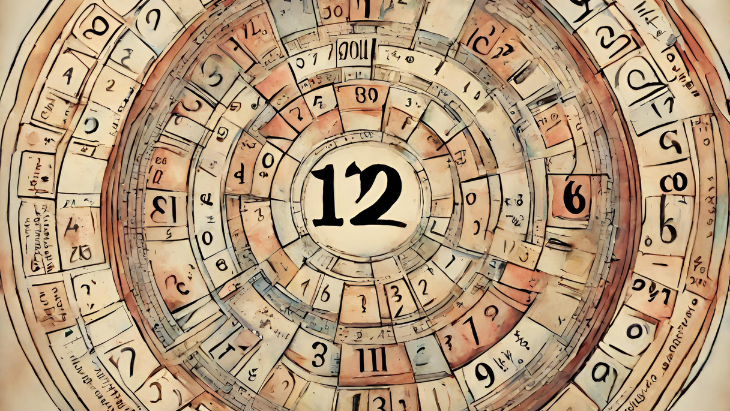Elbette, işte “how to find equilibrium price” hakkında kısa bir giriş paragrafı:
In economics, equilibrium price is the price at which the quantity demanded of a good or service equals the quantity supplied. It is the price that balances the forces of supply and demand.
To find equilibrium price, we can use the following steps:
- Set up the supply and demand equations.
- Set the two equations equal to each other.
- Solve the equation for price.
In this article, we will discuss how to find equilibrium price using these steps. We will also provide some examples to help you understand the concept.
Equilibrium Price
In economics, equilibrium price is the price at which the quantity demanded of a good or service equals the quantity supplied. It is the price that balances the forces of supply and demand.
The equilibrium price can be found by setting the supply and demand equations equal to each other and solving for price.
The supply equation shows the quantity of a good or service that producers are willing to supply at each price. The demand equation shows the quantity of a good or service that consumers are willing to demand at each price.
When the supply and demand equations are equal, the market is in equilibrium. At this price, there is no shortage or surplus of the good or service.
The equilibrium price is important because it is the price that ensures that the market is efficient. At the equilibrium price, all buyers who are willing to pay the price are able to find a seller, and all sellers who are willing to sell at the price are able to find a buyer.
The equilibrium price can change due to changes in supply or demand. For example, if the supply of a good decreases, the equilibrium price will increase. If the demand for a good increases, the equilibrium price will also increase.
Examples of Equilibrium Price
-
- The equilibrium price of a gallon of milk is the price at which the quantity of milk that consumers are willing to buy equals the quantity of milk that producers are willing to sell.
- The equilibrium price of a movie ticket is the price at which the quantity of movie tickets that consumers are willing to buy equals the quantity of movie tickets that theaters are willing to sell.
- The equilibrium price of a house is the price at which the quantity of houses that buyers are willing to buy equals the quantity of houses that sellers are willing to sell.
Equilibrium Point
In economics, equilibrium point is the point where the supply and demand curves intersect. It is the point at which the quantity demanded of a good or service equals the quantity supplied.
The equilibrium point can be found by setting the supply and demand equations equal to each other and solving for quantity.
The supply equation shows the quantity of a good or service that producers are willing to supply at each price. The demand equation shows the quantity of a good or service that consumers are willing to demand at each price.
When the supply and demand equations are equal, the market is in equilibrium. At this point, there is no shortage or surplus of the good or service.
The equilibrium point is important because it is the point at which the market is efficient. At the equilibrium point, all buyers who are willing to pay the price are able to find a seller, and all sellers who are willing to sell at the price are able to find a buyer.
The equilibrium point can change due to changes in supply or demand. For example, if the supply of a good decreases, the equilibrium point will move to the left. If the demand for a good increases, the equilibrium point will move to the right.
Examples of Equilibrium Point
- The equilibrium point for the market for milk is the point where the supply curve for milk intersects the demand curve for milk.
- The equilibrium point for the market for movie tickets is the point where the supply curve for movie tickets intersects the demand curve for movie tickets.
- The equilibrium point for the market for houses is the point where the supply curve for houses intersects the demand curve for houses.
Conclusion
Equilibrium point is a fundamental concept in economics. It is the point at which the market is efficient and that all buyers and sellers are able to find each other.
Additional Information
In addition to the equilibrium point, there are two other possible points on the supply and demand curves: shortage and surplus.
- Shortage occurs when the quantity demanded of a good or service exceeds the quantity supplied.
- Surplus occurs when the quantity supplied of a good or service exceeds the quantity demanded.
Shortages and surpluses are temporary conditions that are eventually eliminated by changes in price.
Supply and Demand
In economics, supply and demand are the two forces that determine the price and quantity of a good or service.
Supply is the quantity of a good or service that producers are willing to sell at each price.
Demand is the quantity of a good or service that consumers are willing to buy at each price.
The equilibrium price is the price at which the quantity demanded of a good or service equals the quantity supplied.
The equilibrium point is the point on the supply and demand curves where the quantity demanded equals the quantity supplied.
Changes in supply or demand can cause the equilibrium price and quantity to change.
For example, if the supply of a good decreases, the equilibrium price will increase.
If the demand for a good increases, the equilibrium price will also increase.
Supply and demand are fundamental concepts in economics. They help us to understand how prices are determined and how markets work.
Here are some additional information about supply and demand:
- The supply curve shows the relationship between the price of a good or service and the quantity that producers are willing to supply.
- The demand curve shows the relationship between the price of a good or service and the quantity that consumers are willing to demand.
- The equilibrium price is found by setting the supply and demand curves equal to each other and solving for price.
- The equilibrium point is found by setting the supply and demand curves equal to each other and solving for quantity.
Conclusion
Supply and demand are two of the most important concepts in economics. They help us to understand how markets work and how prices are determined.
Market Equilibrium
In economics, market equilibrium is the state where the quantity demanded of a good or service equals the quantity supplied. It is the point where the forces of supply and demand are in balance.
The equilibrium price is the price at which the quantity demanded equals the quantity supplied. It is the price that ensures that all buyers who are willing to pay the price are able to find a seller, and all sellers who are willing to sell at the price are able to find a buyer.
The equilibrium quantity is the quantity of a good or service that is bought and sold at the equilibrium price.
Market equilibrium is important because it is the point where the market is most efficient. At the equilibrium price, there is no shortage or surplus of the good or service.
Changes in supply or demand can cause the equilibrium price and quantity to change.
For example, if the supply of a good decreases, the equilibrium price will increase.
If the demand for a good increases, the equilibrium price will also increase.
Market equilibrium is a fundamental concept in economics. It helps us to understand how markets work and how prices are determined.
Here are some additional information about market equilibrium:
- The market equilibrium can be found by setting the supply and demand curves equal to each other and solving for price.
- The market equilibrium can also be found by graphing the supply and demand curves and finding the point where they intersect.
- Market equilibrium is a dynamic concept. It can change over time due to changes in supply or demand.
Conclusion
Market equilibrium is a state where the forces of supply and demand are in balance. It is the point where the quantity demanded equals the quantity supplied, and the price is the price that ensures that all buyers and sellers are able to find each other.
How to Find Equilibrium Price
In economics, equilibrium price is the price at which the quantity demanded of a good or service equals the quantity supplied. It is the price that ensures that all buyers who are willing to pay the price are able to find a seller, and all sellers who are willing to sell at the price are able to find a buyer.
There are two ways to find equilibrium price:
-
Using supply and demand equations:
- Set the supply and demand equations equal to each other.
- Solve for price.
-
Using a supply and demand graph:
- Graph the supply and demand curves.
- Find the point where the curves intersect.
Using supply and demand equations:
The supply equation shows the quantity of a good or service that producers are willing to supply at each price. The demand equation shows the quantity of a good or service that consumers are willing to demand at each price.
To find equilibrium price using supply and demand equations, we set the two equations equal to each other and solve for price.
For example, let’s say that the supply equation for a gallon of milk is Qs = 100 – 5P, and the demand equation is Qd = 1000 – 10P.
To find equilibrium price, we set these two equations equal to each other and solve for price:
Qs = Qd
100 - 5P = 1000 - 10P
-10P + 5P = 1000 - 100
-5P = 900
P = -900 / -5
P = 180
Therefore, the equilibrium price for a gallon of milk is $180.
Using a supply and demand graph:
To find equilibrium price using a supply and demand graph, we graph the supply and demand curves and find the point where the curves intersect.
In the graph below, the supply curve is represented by the line S, and the demand curve is represented by the line D. The equilibrium price is the price at which the two curves intersect, which is $180.
Conclusion
Equilibrium price is an important concept in economics. It is the price that ensures that all buyers and sellers are able to find each other.











